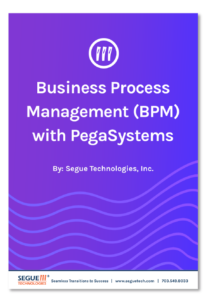Low/No-Code Implementation
Segue Technologies® supports organizations that want to modernize their systems, migrate to the cloud, and streamline their workflow across the enterprise
All organizations share a common principle of delivering specific outcomes for customers or stakeholders. These outcomes are achieved through the design and implementation of connected operations, activities and workflows; also known as a “business processes.” Given the critical link between processes and outcomes, it is not surprising that successful organizations spend considerable time and effort on process improvement. Especially since process improvement can necessitate major changes to their IT infrastructure, particularly with migrating to the cloud or a need to modernize aging business applications. This typically requires a complete re-engineering of business systems, introducing significant risk related to cost, timeline, and capability retention.
The traditional modernization approach to defining requirements and developing a custom/standalone application often fails and will revisit the same modernization challenges over and again. To leave the costly and risky cycle of system aging and re-engineering, many organizations are opting to use no-code or low-code platforms to modernize business applications, or more importantly, their business capabilities. These intelligent Business Process Management (iBPM) platforms include system infrastructure/hosting in the cloud, consolidate security and accreditation and lower the bar for development resources, even allowing customers to be “citizen developers” for their own applications. No/low code platforms allow business users to go straight from identifying requirements based on their mission knowledge, to implementing working applications themselves. These platforms also include integrated tools for Agile development.
Business Process Management (BPM)
Business Process Management (BPM) is the effort by which an organization defines, models, understands, improves and monitors their activities, operations and workflows. In the past, Business Process Management (BPM) efforts were often focused on internal processes like finance, operations, or human resources and partner facing processes like supply chain. However, there is a growing focus – particularly in the expanding digital environment – on customer facing processes such as insurance claim processing, new subscription service onboarding, requesting government services, submitting property taxes and so on.
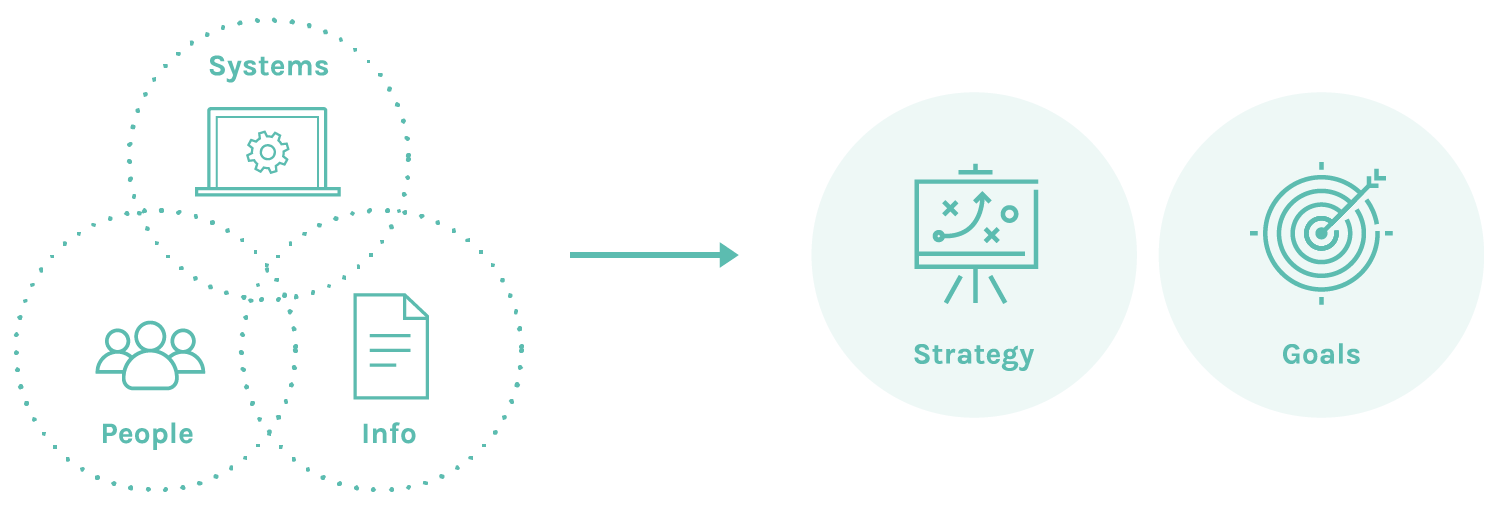
BPM coordinates the behavior of people, systems, information, and things to support an organization’s strategy and goals. It focuses on delivering maximum value, as defined by the organization, in the most efficient manner possible. Use of a BPM platform can address the cost and complexity associated with BPM efforts and minimize these challenges when future evolutions require an organization to again modernize their processes. These platforms allow organizations to focus on the capability; extracting what they need to run their operations from the constraints of standalone custom applications.
Download Our eBook
-

Business Process Management (BPM) with PegaSystems
Learn more about PegaSystems, a leading BPM Platform that offers an adaptive, cloud-architected software that empowers people to rapidly deploy and easily change applications to meet strategic business needs.
Typical Phases of a BPM Effort
BPM efforts will vary in size, scope and complexity, however, most involve the following basic phases:
1. MODEL
Identify, define and create a representation of the complete process so it can be easily understood and communicated
2. EXECUTE
Based on the model, develop and implement the process so that it can be repeatably performed
3. CONTROL
Ensure the process is consistently followed
5. OPTIMIZE
Use the data collected to determine further process improvements
4. MONITOR
Collect meaningful data to determine the effectiveness of the process in delivering the expected value and benefits
Segue SBIR Project - Modernizing and Migrating Legacy Systems to the Cloud
Segue Technologies was awarded Phase I and Phase II Small Business Innovative Research (SBIR) contracts to modernize and migrate legacy systems to the Cloud. Our solution combines our suite of system engineering practices called the Segue Process Framework (SPF) and a no/low-code development platform.
In Phase I, we worked with an Air Force organization to identify a specific legacy system set of business capabilities and built a prototype application to operate in a Cloud environment. Using an Agile approach, we developed a solution using a no/low-code platform in an operational cloud environment, demonstrating rapid delivery of capability. Our solution included reusable component architecture and reusable software code.
With Phase II, we demonstrated the sharing of applications across the enterprise, as well as across services. We identified existing capability for similar business processes in the Marine Corps and demonstrated its rapid integration into our prototype application tailored to Air Force business processes, which is greatly extending the Phase I prototype capability.

Segue’s Phase III SBIR is ideal for Federal customers who are seeking legacy system modernization and/or migration to a cloud environment. Through our approach, Federal organizations can realize the following:
Application Rationalization
- Consolidate legacy systems capability to streamline workflow
- Eliminate redundant/overlapping systems
- Reduce system sustainment needs/teams
- Consolidate Risk Management Framework (RMF) requirements for multiple systems
Migrate to the Cloud / Re-Engineer Legacy Capability in the Cloud
- Increase scalability and flexibility
- Eliminate hardware costs and support requirements
Integration of Advanced Tools
- Leverage Process Automation (Robotic and Digital)
- Provision Advanced Data Capabilities (Analytics, Machine Learning (ML) / Artificial Intelligence (AI))
Transition to a Low/No Code Platform
- Reduce dependence on development teams to update process flows, data feeds, and business rules
- Enable “Citizen Developers” - put application development into the hands of your mission subject matter experts
- Prototype / Development platform that supports and includes tools for Agile methods
Contact us for more information on working with Segue on SBIR Phase III projects related to this work.
Related Blogs
-
 August 22nd, 2022
August 22nd, 2022The Life of a Pega Software Developer
MorePega Developers are skilled Software Developers that design and deploy enterprise-level applications on Pega PRPC. This may involve developing BPM applications, integrating web services, designing data models and frameworks, and collating business analysis requirements.
-
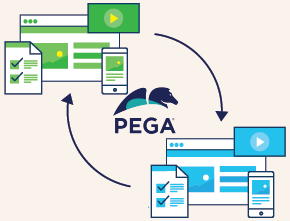 November 10th, 2020
November 10th, 2020Code Reusability with the Pega Platform
MoreLow/No Code Platforms support rapid development of apps which far outpaces traditional development, both for building business applications and staying at the forefront of socially trending apps.
-
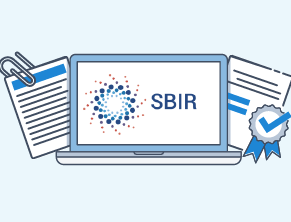 September 3rd, 2020
September 3rd, 2020What Is a SBIR?
MoreTwelve federal agencies including the Department of Defense are utilizing SBIRs for its sole-source capability to expedite the acquisition process to obtain innovative technology and new capability at lightning speeds.
-
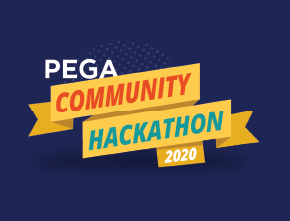 July 22nd, 2020
July 22nd, 2020Low Code Development in Pega Case Study: Chemical Industry Process Hazard Analysis Application
MoreSegue Technologies intern, Carrie Vennefron, created an app on Pega software that may change the way chemical industries operate.
-
 May 31st, 2019
May 31st, 2019Reduce System Maintenance Costs with a Business Process Management Tool
MoreThe Pega Platform is the right Business Process Management (BPM) solution for system maintenance cost savings.
-
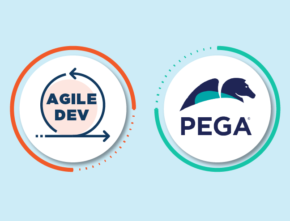 May 31st, 2019
May 31st, 2019Agile Development with the Pega BPM Platform
MoreThe Pega BPM platform was designed with an Agile mindset for teams to effectively follow a DevOps approach to application development and sustainment.
-
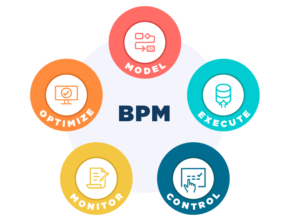 May 9th, 2019
May 9th, 2019What is Business Process Management (BPM)?
MoreBPM is an approach to ensuring processes and workflows meet the current and evolving needs of an organization and their customers. BPM is a key practice for system modernization.
-
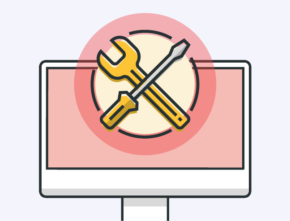 May 9th, 2019
May 9th, 2019Top Five BPM Tools for the Enterprise
MoreThe need to modernize information systems and business processes is growing, but not all Business Process Management (BPM) tools are the same. Take a look at some of the top options for Enterprise applications.
-
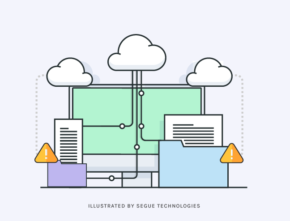 May 9th, 2019
May 9th, 2019Common Problems with Cloud Migration
MoreIn undertaking a cloud migration, there are several common problems that organizations could face and multiple options for getting existing systems into the cloud.
-
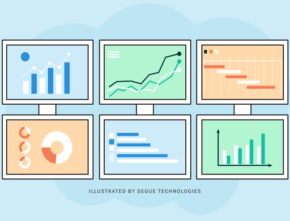 May 9th, 2019
May 9th, 2019How to Choose a Business Process Management Tool
MoreWhen choosing a BPM tool for your organization, first consider your goals and evaluation criteria to meet them. You need to know what you need, to choose the tool that is best for you.
-
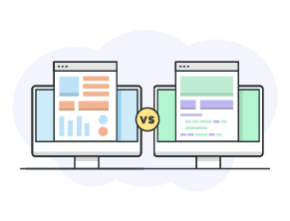 April 17th, 2019
April 17th, 2019What is the Difference Between No-Code and Low-Code Platforms?
MoreLearn about the differences between low-code and no-code platforms and find out which is best for you.
